The Space and Physical Access
The Jones Memorial Library is a special library focusing on genealogy and history. It is located in Lynchburg, Virginia on the corner of Lakeside Drive and Memorial Drive. It is the second oldest public library in Virginia and was opened in 1908 (Jones Memorial Library, n.d.). It was located initially on Rivermont Road but moved in 1987 to its current location on Memorial Drive. The new location had humidity and temperature controls necessary to preserve the collection. Rubin and Rubin (2020) wrote that libraries have a “special responsibility” to make sure that cultural information is available over time, no matter the format (p 95). They also said that “physical items as well as data in digital repositories must be carefully preserved to ensure integrity and usability over the years” (p. 95). When the Lynchburg Public Library opened in 1966, The Jones Memorial Library moved to the 2nd floor over the public library. (Jones Memorial Library, n.d.). It looks very different from the original library building. The old Jones Memorial Library is on the National Register of Historic Places.
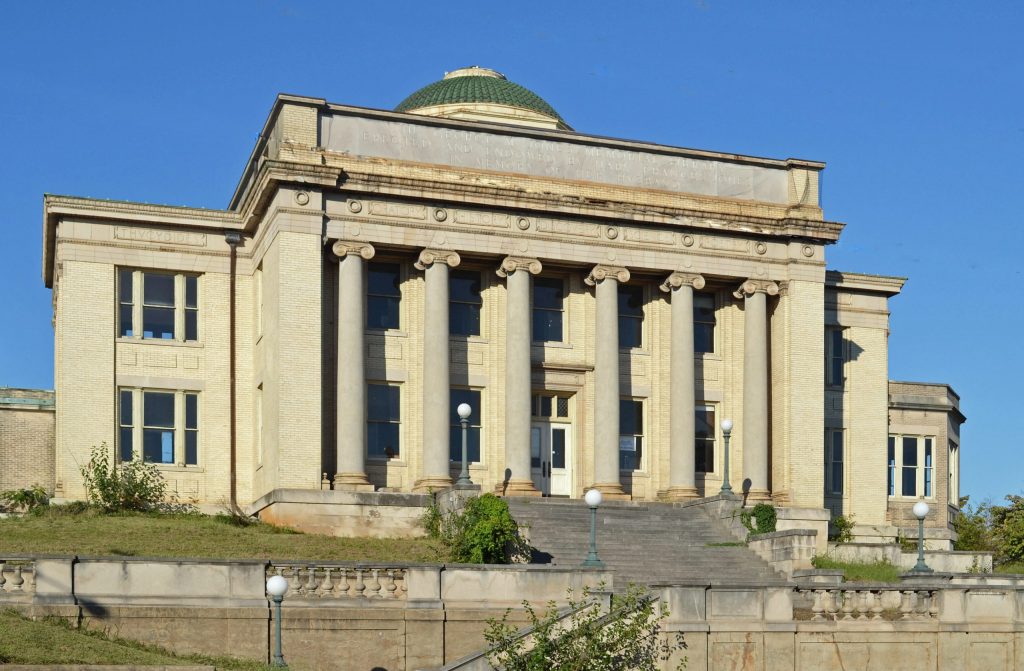
Former Jones Memorial Library (Calder Loth, 2013, Virginia Department of Historic Resources)
The new library is difficult to get to because one cannot get to the elevator for the Jones Memorial Library through the Public Library on the first floor. You have to walk outside and go in front of the branch and walk all the way around to the lobby where the elevator is located. It was wheelchair accessible and there was a ramp to the sidewalk. The library is on public transportation, there is a bike rack and there is a lot of available parking. It is just a long walk from the parking lot around to the lobby for the elevator up to the second floor.

Sign in front of Jones Memorial Library (McMillion-Jackson, 2022)
It is unlikely that the Jones Memorial Library gets “walk in” traffic because I had to ask the librarian in the public library, on the first floor, how to get to the elevator for the special library. The library has one large room with traditional style furniture. It felt “old and stoic” upon entering the room. There were portraits on the walls of the library. The library is not supported by taxpayer or public funds so the furniture and decorum may have been donated. There was a reading area in front with upholstered chairs. There was a sign in desk at the front of the room. The research librarian had an office to the left of the room. The building where both libraries are located is on the corner of a shopping center.
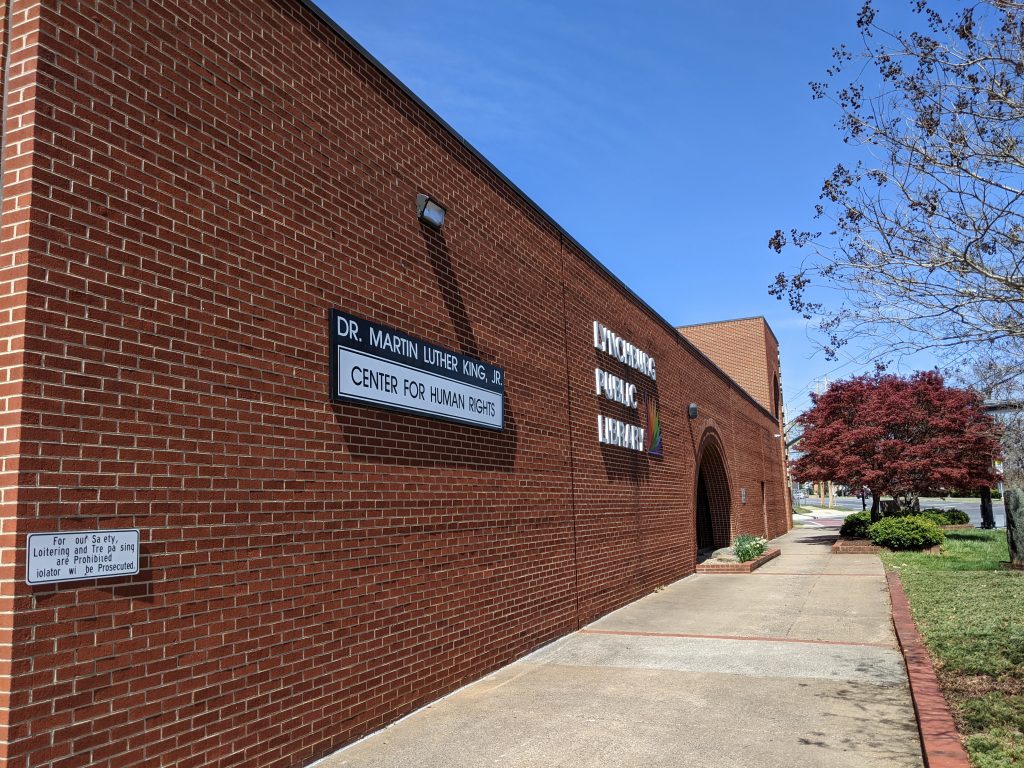
Front of Jones Memorial Library (on the corner on the end) and Lynchburg Public Library (McMillion-Jackson, 2022)
History
According to the website, https://www.jmlibrary.org/history-of-the-library/
“The Library had been the dream of George Morgan Jones, philanthropist and industrialist of Lynchburg, but the dream was never realized in his lifetime. As a memorial to her husband, Mary Frances Watts Jones financed the construction and equipping of the library. During the latter years of her life, she was actively involved in the day-to-day operation of the Library. In her will, Mrs. Jones provided for the continued support of the Library through the establishment of an endowment. To this day, the Library receives no public monies and its operating budget is funded primarily from this endowment” (Jones Memorial Library, n.d.).
Digital Access
According to the website, “the Library book collection, and, in addition, the manuscript collections and architectural archives, may now be reviewed through online computer networks throughout the world” (Jones Memorial Library, n.d.). I was able to view many of the collections online which is beneficial for researchers not located in Lynchburg. The librarians at this library primarily focus on “in-person” assistance. Unlike a large library, for example, New York Public Library, who assists via telephone, email and in person. This library will mail documents that have been ordered online.
People-Patrons and Staff
The librarian in the office was an elderly white woman and a middle-aged white male librarian was out in the main room at a desk. There was one female white patron there looking in some of the records. The library is located in a lower-income predominately African American community. The public library has a more diverse clientele including homeless and different ethnic groups who may be just browsing and reading. On the other hand, those that go to the special collection’s library are researching. The librarian was friendly and greeted us after seeing me walking around. She offered assistance and said to ask if we needed any help with finding anything. There are four research librarians on staff (Jones Memorial Library, n.d.). The endowment must have been sizeable to maintain the library and staff for this length of time.
Collections
In terms of technology, I saw microfiche readers and computers available for use. There are photographs, books, maps, obituaries, pamphlets, architectural drawings, newspapers, etc. available to researchers, but they have to be requested so that the librarian can bring them out. There is an online catalogue that can be accessed from the website. Documents are not kept in the main reading room. Some of the collections were donated from local photographers and Lynchburg families. The items in the collections are very specific as in photographs of some local historical homes that are no longer standing from the 1800s or a photograph of a local person. For example, there is a photograph of the executive officers of the Lynchburg Tobacco Association from 1903. If someone was born in Lynchburg during that timeframe, their descendants may find information that they can use from the local newspaper or obituary. The nice option is researchers can download the pictures or order a print on archival paper for various fees depending on the size of the print or type of download. I saw minimal diversity in the collection of photographs from early Lynchburg. The books in the collection do not circulate. One would need to read them there in the reading room or copy what was needed while in the library. There are historical and genealogical related books available from other states as well as locally. There is a virtual bookshelf that can browse and see what is available.
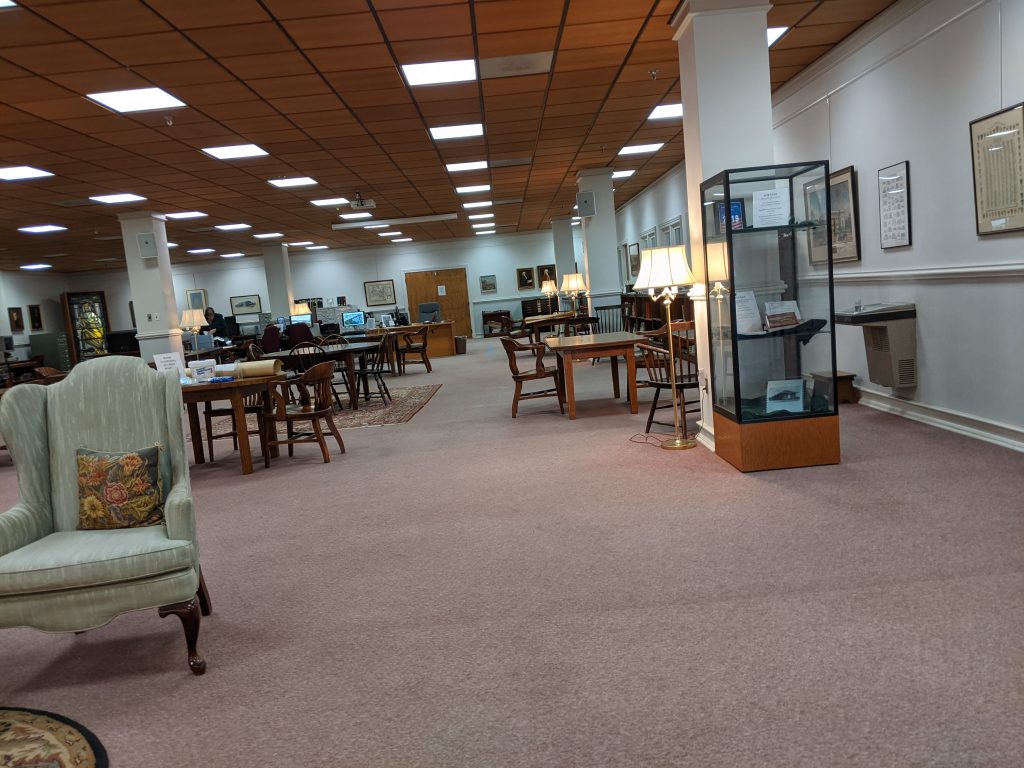
Reading Room, Jones Memorial Library (McMillion-Jackson, 2022)
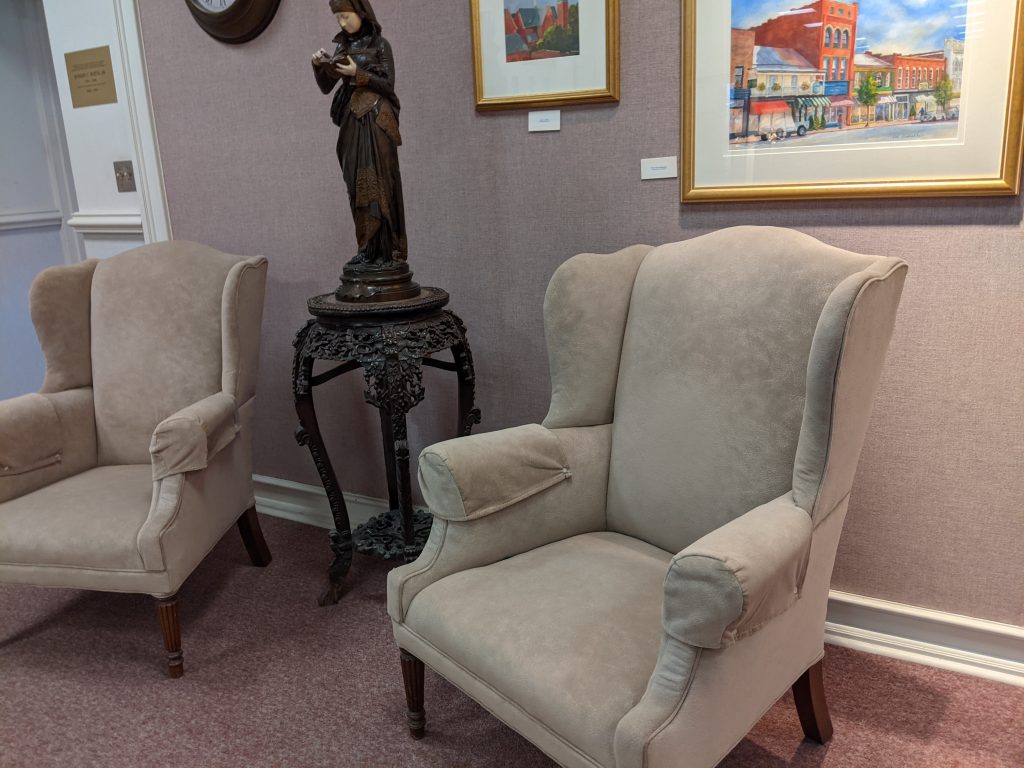
Front of Reading Room, Jones Memorial Library (McMillion-Jackson, 2022)

Lobby of Jones Memorial Library (McMillion-Jackson, 2022)
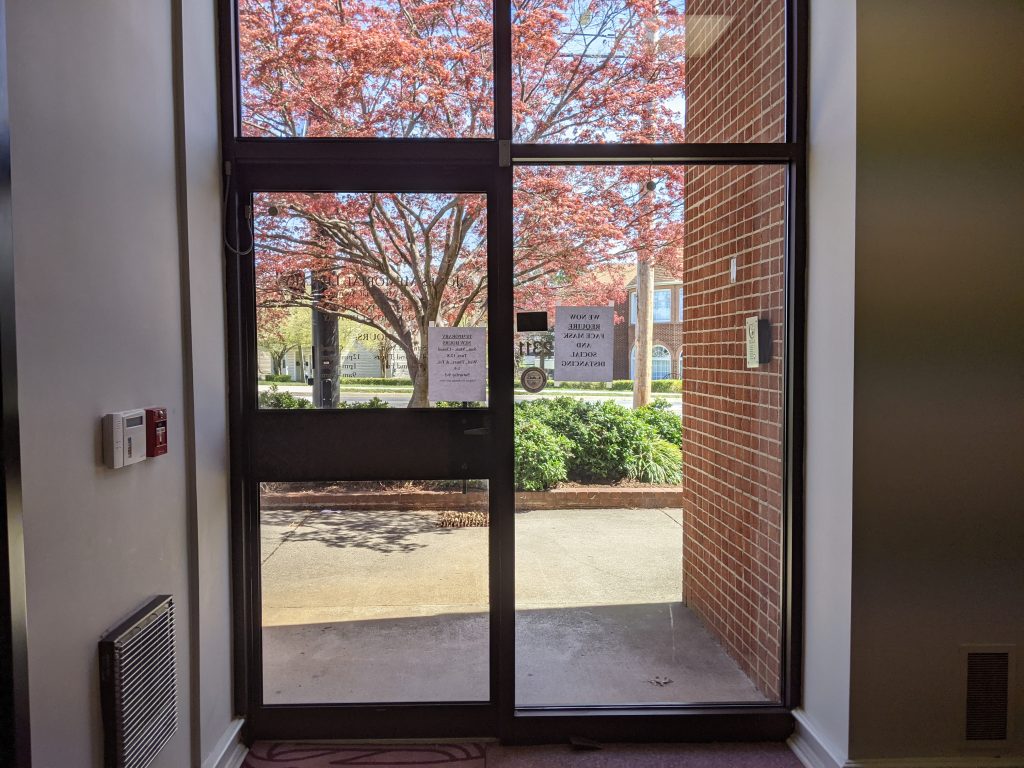
Lobby of Jones Memorial Library(McMillion-Jackson, 2022)
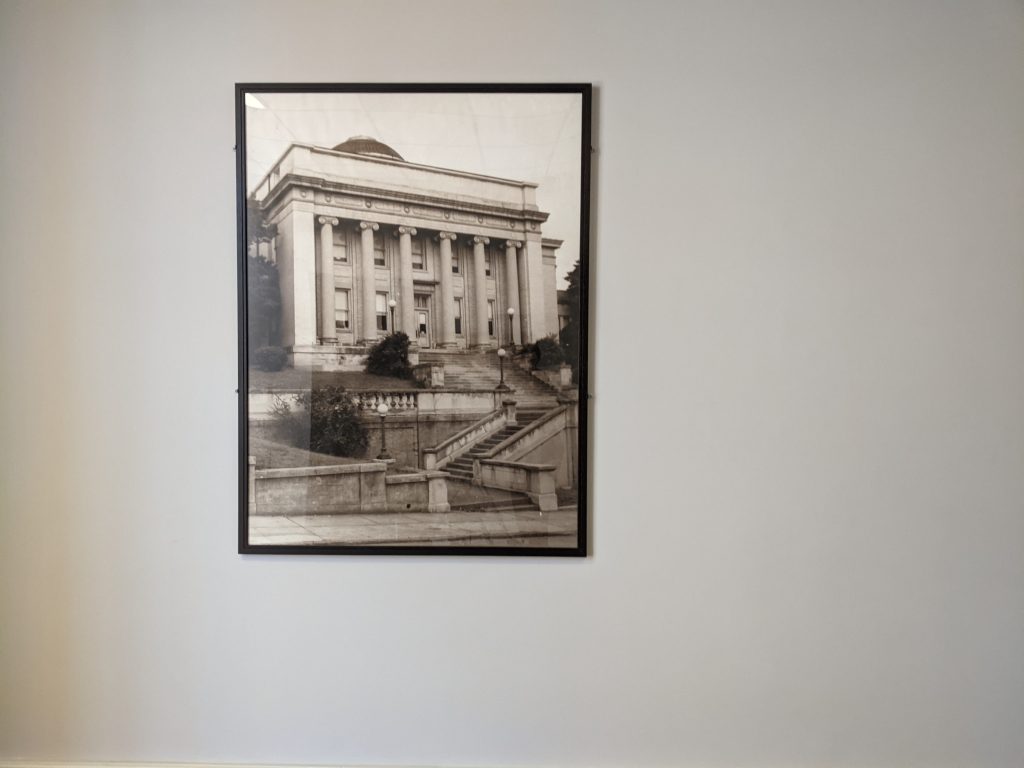
Lobby of Jones Memorial Library, Picture of Old Jones Memorial (McMillion-Jackson 2022)
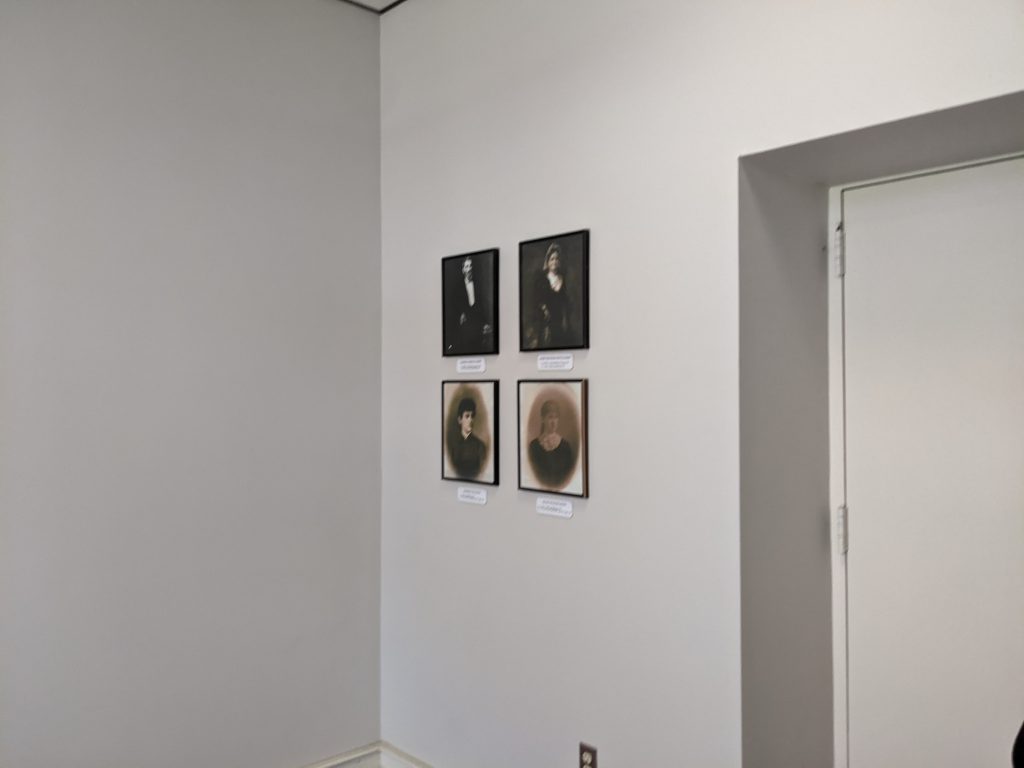
Lobby of Jones Memorial Library, Jones Family (Daughters died at 16 and 19 years old) (McMillion-Jackson, 2022)
References
Jones Memorial Library, n.d., Jones Memorial Library. https://www.jmlibrary.org/contributions-and-donations/
Loth, C. , Virginia Department of Historic Resources (2013) [118-0153 Jones Memorial Library
Photograph] https://www.dhr.virginia.gov/historic-registers/118-0153/
McMillion-Jackson, S. (2022). Front of library, sign in front, lobby by elevator newspaper clippings, old Jones Memorial Library, Jones Family pictures, reading room, front of reading room, lobby front door, [Photographs of Jones Memorial Library]
Rubin, R. E. and Rubin, R. G. (2020). Foundations of library and information science (5th ed.) ALA Neal-Schuman.
Shawnne, I had the same thoughts as you in regards to the endowment. To keep the library running for this long, it must have been quite a sizeable endowment. I can see how the decor does seem older but, in a way, it goes along with the theme of the history and “old feel” of the library. 🙂 Also, this library makes me think how the patrons and community help to add to the collection. Having a family that has deep roots in the Lynchburg area and donating different artifacts or pictures from bygone years seem to a be a great way to add to the collection. Instead of just throwing out old pictures, why not donate it? 🙂 Thanks for the visit!
I wish the collections could have been sustained in the original library as designed. It seemed like where it located now doesn’t do it justice as Mrs. Jones designed. The old building was being sold and I think it is being used for events now. I did like the ideas of Lynchburg families donating to the library and it being a repository for the history of the city.
Hi Shawnee! It is interesting that this is the second oldest library in Virginia. In a way, the building matches its “old and stoic feeling.” It is a nice resource for the patrons to use to figure out the history of the area and their ancestry. Even though it seems a bit hard to find, there was at least one patron using the library so hopefully, it gets more foot traffic despite its location. I am glad to see the photographs on display as they can lend a lot of information to those researching history.
I have lived in Lynchburg since 2013 and I have visited that public library branch on the first floor hundreds of times, but didn’t know about the archives upstairs. I guess if I was looking for local genealogy records, I would have been directed there.
Shawnne, the old library is definitely what I have in mind when I picture a Geneology centered library or library with a focus on historical archives! I had the same thought you did as I was reading, there must be a good budget there to support that many full-time staff members in a special library. It’s also nice to see that patrons can order copies of photographs or archival information for their own collection.. Also, thank you, I learned a new word as I was reading your post, I’ve never heard the term “microfiche”!
I guess I am showing my age because I recognized the microfiche reader and I have actually used one. I prefer the old building in terms of it being a repository for historical and genealogy documents, but unfortunately it was not environmentally friendly to the documents it housed. If patrons find something they want for their personal collection, they can pay the fee and get a print or download. Those fees may also help the operating budget.
I liked the fact that the researchers can download pictures or order a print on archival paper for various fees. It also seems like a lot of special libraries require the patrons to read the books only while they’re there. Like Chelsea mentioned in her comment, I wasn’t too familiar with the word “microfiche” and I had to search the meaning up online. I’m not really interested in genealogy and history as much, but I would love to visit many special libraries that are located near me.
The archives only allow researchers to use the books while there and the librarians has to get the book for the patron. This is one way to maintain control over the documents ensuring they are returned. I was surprised that the paper used for the print was actual archival paper, which justifies the cost.
Hi Shawnne, this was a fascinating entry — and your follow-up comments add interesting context, too. I agree with your assessment that the new building doesn’t seem to do justice to the contents it houses as well as the original building does — I suppose the endowment was not great enough to update that old building to adequately preserve its one-of-a-kind materials, as you mention.
Yeah Sarah, there is definitely a difference in the two buildings and like you said the endowment probably wasn’t enough to totally remodel the old building and maintain the collections and staff. There may be other donors, but it still may not be sufficient.